- Home
- Richard Dawkins
The Extended Phenotype Page 7
The Extended Phenotype Read online
Page 7
This brings me to my own critique of naive adaptationism, my own list of constraints on perfection, a list which has much in common with those of Lewontin and Cain, and those of Maynard Smith (1978b), Oster and Wilson (1978), Williams (1966), Curio (1973) and others. There is, indeed, much more agreement than the polemical tone of recent critiques would suggest. I shall not be concerned with particular cases, except as examples. As Cain and Lewontin both stress, it is not of general interest to challenge our ingenuity in dreaming up possible advantages of particular strange things that animals do. Here we are interested in the more general question of what the theory of natural selection entitles us to expect. My first constraint on perfection is an obvious one, mentioned by most writers on adaptation.
Time lags
The animal we are looking at is very probably out of date, built under the influence of genes that were selected in some earlier era when conditions were different. Maynard Smith (1976b) gives a quantitative measure of this effect, the ‘lag load’. He (Maynard Smith 1978b) cites Nelson’s demonstration that gannets, who normally lay only one egg, are quite capable of successfully incubating and rearing two if an extra one is experimentally added. Obviously an awkward case for the Lack hypothesis on optimal clutch size, and Lack himself (1966) was not slow to use the ‘time-lag’ escape route. He suggested, entirely plausibly, that the gannet clutch size of one egg evolved during a time when food was less plentiful, and that there had not yet been time for them to evolve to meet the changed conditions.
Such post hoc rescuing of a hypothesis in trouble is apt to provoke accusations of the sin of unfalsifiability, but I find such accusations rather unconstructive, almost nihilistic. We are not in Parliament or a court of law, with advocates of Darwinism scoring debating points against opponents, and vice versa. With the exception of a few genuine opponents of Darwinism, who are unlikely to be reading this, we are all in this together, all Darwinians who substantially agree on how we interpret what is, after all, the only workable theory we have to explain the organized complexity of life. We should all sincerely want to know why gannets lay only one egg when they could lay two, rather than treating the fact as a debating point. Lack’s invoking of the ‘time-lag’ hypothesis may have been post hoc, but it is still thoroughly plausible, and it is testable. No doubt there are other possibilities which, with luck, may also be testable. Maynard Smith is surely right that we should leave aside the ‘defeatist’ (Tinbergen 1965) and untestable ‘natural selection has bungled again’ explanation as a last resort, as a matter of simple research strategy if nothing else. Lewontin (1978b) says much the same: ‘In a sense, then, biologists are forced to the extreme adaptationist program because the alternatives, although they are undoubtedly operative in many cases, are untestable in particular cases.’
Returning to the time-lag effect itself, since modern man has drastically changed the environment of many animals and plants over a time-scale that is negligible by ordinary evolutionary standards, we can expect to see anachronistic adaptations rather often. The hedgehog antipredator response of rolling up into a ball is sadly inadequate against motor cars.
Lay critics frequently bring up some apparently maladaptive feature of modern human behaviour—adoption, say, or contraception—and fling down a challenge to ‘explain that if you can with your selfish genes’. Obviously, as Lewontin, Gould and others have rightly stressed, it would be possible, depending on one’s ingenuity, to pull a ‘sociobiological’ explanation out of a hat, a ‘just-so story’, but I agree with them and Cain that the answering of such challenges is a trivial exercise; indeed it is likely to be positively harmful. Adoption and contraception, like reading, mathematics, and stress-induced illness, are products of an animal that is living in an environment radically different from the one in which its genes were naturally selected. The question, about the adaptive significance of behaviour in an artificial world, should never have been put; and although a silly question may deserve a silly answer, it is wiser to give no answer at all and to explain why.
A useful analogy here is one that I heard from R. D. Alexander. Moths fly into candle flames, and this does nothing to help their inclusive fitness. In the world before candles were invented, small sources of bright light in darkness would either have been celestial bodies at optical infinity, or they might have been escape holes from caves or other enclosed spaces. The latter case immediately suggests a survival value for approaching light sources. The former case also suggests one, but in a more indirect sense (Fraenkel & Gunn 1940). Many insects use celestial bodies as compasses. Since these are at optical infinity, rays from them are parallel, and an insect that maintains a fixed orientation of, say, 30° to them will go in a straight line. But if the rays do not come from infinity they will not be parallel, and an insect that behaves in this way will spiral in to the light source (if steering an acute-angled course) or spiral away (if steering an obtuse-angled course) or orbit the source (if steering a course of exactly 90° to the rays). Self-immolation by insects in candle flames, then, has no survival value in itself: according to this hypothesis, it is a byproduct of the useful habit of steering by means of sources of light which are ‘assumed’ to be at infinity. That assumption was once safe. It now is safe no longer, and it may be that selection is even now working to modify the insects’ behaviour. (Not necessarily, however. The overhead costs of making the necessary improvements may outweigh the benefits they might bring: moths that pay the costs of discriminating candles from stars may be less successful, on average, than moths that do not attempt the costly discrimination and accept the low risk of self-immolation—see next chapter.)
But now we have reached a problem which is more subtle than the simple time-lag hypothesis itself. This is the problem, already mentioned, about what characteristics of animals we choose to recognize as units which require explanation. As Lewontin (1979b) puts it, ‘What are the “natural” suture lines for evolutionary dynamics? What is the topology of phenotype in evolution? What are the phenotypic units of evolution?’ The candle flame paradox arose only because of the way in which we chose to characterize the moth’s behaviour. We asked ‘Why do moths fly into candle flames?’ and were puzzled. If we had characterized the behaviour differently and asked ‘Why do moths maintain a fixed angle to light rays (a habit which incidentally causes them to spiral into the light source if the rays happen not to be parallel)?’, we should not have been so puzzled.
Consider human male homosexuality as a more serious example. On the face of it, the existence of a substantial minority of men who prefer sexual relations with their own sex rather than with the opposite sex constitutes a problem for any simple Darwinian theory. The rather discursive title of a privately circulated homosexualist pamphlet, which the author was kind enough to send me, summarizes the problem: ‘Why are there “gays” at all? Why hasn’t evolution eliminated “gayness” millions of years ago?’ The author, incidentally, thinks the problem so important that it seriously undermines the whole Darwinian view of life. Trivers (1974), Wilson (1975, 1978), and especially Weinrich (1976) have considered various versions of the possibility that homosexuals may, at some time in history, have been functionally equivalent to sterile workers, foregoing personal reproduction the better to care for other relatives. I do not find this idea particularly plausible (Ridley & Dawkins, 1981), certainly no more so than a ‘sneaky male’ hypothesis. According to this latter idea, homosexuality represents an ‘alternative male tactic’ for obtaining matings with females. In a society with harem defence by dominant males, a male who is known to be homosexual is more likely to be tolerated by a dominant male than a known heterosexual male, and an otherwise subordinate male may be able, by virtue of this, to obtain clandestine copulations with females.
But I raise the ‘sneaky male’ hypothesis not as a plausible possibility so much as a way of dramatizing how easy and inconclusive it is to dream up explanations of this kind (Lewontin, 1979b, used the same didactic trick in discussing apparent
homosexuality in Drosophila). The main point I wish to make is quite different and much more important. It is again the point about how we characterize the phenotypic feature that we are trying to explain.
Homosexuality is, of course, a problem for Darwinians only if there is a genetic component to the difference between homosexual and heterosexual individuals. While the evidence is controversial (Weinrich 1976), let us assume for the sake of argument that this is the case. Now the question arises, what does it mean to say there is a genetic component to the difference, in common parlance that there is a gene (or genes) ‘for’ homosexuality? It is a fundamental truism, of logic more than of genetics, that the phenotypic ‘effect’ of a gene is a concept that has meaning only if the context of environmental influences is specified, environment being understood to include all the other genes in the genome. A gene ‘for’ A in environment X may well turn out to be a gene for B in environment Y. It is simply meaningless to speak of an absolute, context-free, phenotypic effect of a given gene.
Even if there are genes which, in today’s environment, produce a homosexual phenotype, this does not mean that in another environment, say that of our Pleistocene ancestors, they would have had the same phenotypic effect. A gene for homosexuality in our modern environment might have been a gene for something utterly different in the Pleistocene. So, we have the possibility of a special kind of ‘time-lag effect’ here. It may be that the phenotype which we are trying to explain did not even exist in some earlier environment, even though the gene did then exist. The ordinary time-lag effect which we discussed at the beginning of this section was concerned with changes in the environment as manifested in changed selection pressures. We have now added the more subtle point that changes in the environment may change the very nature of the phenotypic character we set out to explain.
Historical constraints
The jet engine superseded the propeller engine because, for most purposes, it was superior. The designers of the first jet engine started with a clean drawing board. Imagine what they would have produced if they had been constrained to ‘evolve’ the first jet engine from an existing propeller engine, changing one component at a time, nut by nut, screw by screw, rivet by rivet. A jet engine so assembled would be a weird contraption indeed. It is hard to imagine that an aeroplane designed in that evolutionary way would ever get off the ground. Yet in order to complete the biological analogy we have to add yet another constraint. Not only must the end product get off the ground; so must every intermediate along the way, and each intermediate must be superior to its predecessor. When looked at in this light, far from expecting animals to be perfect we may wonder that anything about them works at all.
Examples of the Heath Robinson (or Rube Goldberg—Gould 1978) character of animals are harder to be confident of than the previous paragraph might lead us to expect. A favourite example, suggested to me by Professor J. D. Currey, is the recurrent laryngeal nerve. The shortest distance from the brain to the larynx in a mammal, especially a giraffe, is emphatically not via the posterior side of the aorta, yet that is the route taken by the recurrent laryngeal. Presumably there once was a time in the remote ancestry of the mammals when the straight line from origin to end organ of the nerve did run posterior to the aorta. When, in due course, the neck began to lengthen, the nerve lengthened its detour posterior to the aorta, but the marginal cost of each step in the lengthening of the detour was not great. A major mutation might have re-routed the nerve completely, but only at a cost of great upheaval in early embryonic processes. Perhaps a prophetic, God-like designer back in the Devonian could have foreseen the giraffe and designed the original embryonic routing of the nerve differently, but natural selection has no foresight. As Sydney Brenner has remarked, natural selection could not be expected to have favoured some useless mutation in the Cambrian simply because ‘it might come in handy in the Cretaceous’.
The Picasso-like face of a flatfish such as a sole, grotesquely twisted to bring both eyes round to the same side of the head, is another striking demonstration of a historical constraint on perfection. The evolutionary history of these fish is so clearly written into their anatomy, that the example is a good one to thrust down the throats of religious fundamentalists. Much the same could be said of the curious fact that the retina of the vertebrate eye appears to be installed backwards. The light-sensitive ‘photocells’ are at the back of the retina, and light has to pass through the connecting circuitry, with some inevitable attenuation, before it reaches them. Presumably it would be possible to write down a very long sequence of mutations which would eventually lead to the production of an eye whose retina was ‘the right way round’ as it is in cephalopods, and this might be, in the end, slightly more efficient. But the cost in embryological upheaval would be so great that the intermediate stages would be heavily disfavoured by natural selection in comparison with the rival, patched-up job which does, after all, work pretty well. Pittendrigh (1958) has well said of adaptive organization that it is ‘a patchwork of makeshifts pieced together, as it were, from what was available when opportunity knocked, and accepted in the hindsight, not the foresight, of natural selection’ (see also Jacob, 1977, on ‘tinkering’).
Sewall Wright’s (1932) metaphor, which has become known under the name of the ‘adaptive landscape’, conveys the same idea that selection in favour of local optima prevents evolution in the direction of ultimately superior, more global optima. His somewhat misunderstood (Wright 1980) emphasis on the role of genetic drift in allowing lineages to escape from the pull of local optima, and thereby attain a closer approximation to what a human might recognize as ‘the’ optimal solution, contrasts interestingly with Lewontin’s (1979b) invoking of drift as an ‘alternative to adaptation’. As in the case of pleiotropy, there is no paradox here. Lewontin is right that ‘the finiteness of real populations results in random changes in gene frequency so that, with a certain probability, genetic combinations with lower reproductive fitness will be fixed in a population’. But on the other hand it is also true that, to the extent that local optima constitute a limitation on the attainment of design perfection, drift will tend to provide an escape (Lande 1976). Ironically, then, a weakness in natural selection can theoretically enhance the likelihood of a lineage attaining optimal design! Because it has no foresight, unalloyed natural selection is in a sense an anti-perfection mechanism, hugging, as it will, the tops of the low foot-hills of Wright’s landscape. A mixture of strong selection interspersed with periods of relaxation of selection and drift may be the formula for crossing the valleys to the high uplands. Clearly if ‘adaptationism’ is to become an issue where debating points are scored, there is scope for both sides to have it both ways!
My own feeling is that somewhere here may lie the solution to the real paradox of this section on historical constraints. The jet engine analogy suggested that animals ought to be risible monstrosities of lashed-up improvisation, top-heavy with grotesque relics of patched-over antiquity. How can we reconcile this reasonable expectation with the formidable grace of the hunting cheetah, the aerodynamic beauty of the swift, the scrupulous attention to deceptive detail of the leaf insect? Even more impressive is the detailed agreement between different convergent solutions to common problems, for instance the multiple parallels that exist between the mammal radiations of Australia, South America and the Old World. Cain (1964) remarks that, ‘Up to now it has usually been assumed, by Darwin and others, that convergence will never be so good as to mislead us’ but he goes on to give examples where competent taxonomists have been fooled. More and more groups which had hitherto been regarded as decently monophyletic, are now being suspected of polyphyletic origin.
The citation of example and counter-example is mere idle fact-dropping. What we need is constructive work on the relation between local and global optima in an evolutionary context. Our understanding of natural selection itself needs to be supplemented by a study of ‘escapes from specialization’ to use Hardy’s (1954) phrase. Hardy h
imself was suggesting neoteny as an escape from specialization, while in this chapter, following Wright, I have emphasized drift in this role.
Müllerian mimicry in butterflies may prove to be a useful case-study here. Turner (1977) remarks that ‘among the long-winged butterflies of the tropical American rainforests (ithomiids, heliconids, danaids, pierids, pericopids) there are six distinct warning patterns, and although all the warningly colored species belong to one of these mimicry “rings” the rings themselves coexist in the same habitats through most of the American tropics and remain very distinct… . Once the difference between two patterns is too great to be jumped by a single mutation, convergence becomes virtually impossible, and the mimicry rings will coexist indefinitely.’ This is one of the only cases where ‘historical constraints’ may be close to being understood in full genetic detail. It may provide a worthwhile opportunity also for the study of the genetic details of ‘valley-crossing’, which in the present case would consist in the detachment of a type of butterfly from the orbit of one mimicry ring, and its eventual ‘capture’ by the ‘pull’ of another mimicry ring. Though he does not invoke drift as an explanation in this case, Turner tantalizingly indicates that ‘In southern Europe Amata phegea … has … captured Zygenea ephialtes from the Müllerian mimicry ring of zygaenids, homopterans, etc. to which it still belongs outside the range of A. phegea in northern Europe …’

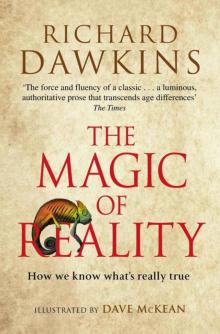 The Magic of Reality
The Magic of Reality The Extended Phenotype
The Extended Phenotype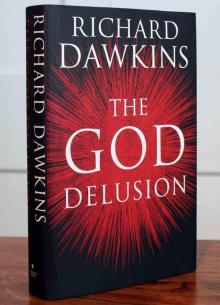 The God Delusion
The God Delusion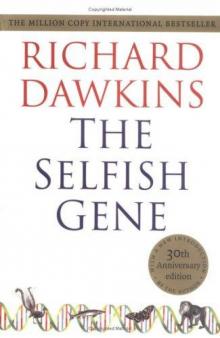 The Selfish Gene
The Selfish Gene The Blind Watchmaker
The Blind Watchmaker The Greatest Show on Earth
The Greatest Show on Earth Climbing Mount Improbable
Climbing Mount Improbable Outgrowing God
Outgrowing God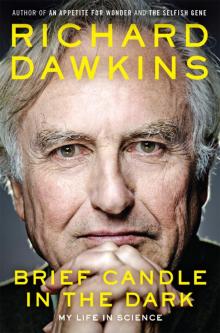 Brief Candle in the Dark
Brief Candle in the Dark The Greatest Show on Earth: The Evidence for Evolution
The Greatest Show on Earth: The Evidence for Evolution Science in the Soul
Science in the Soul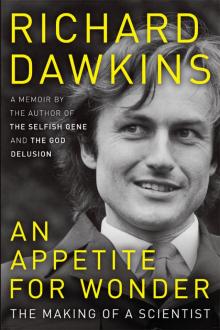 An Appetite for Wonder
An Appetite for Wonder